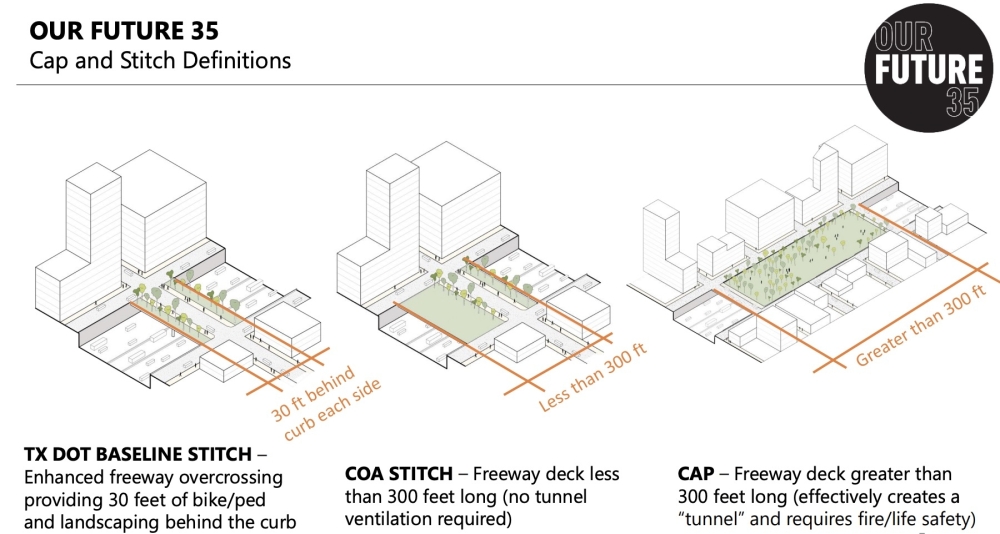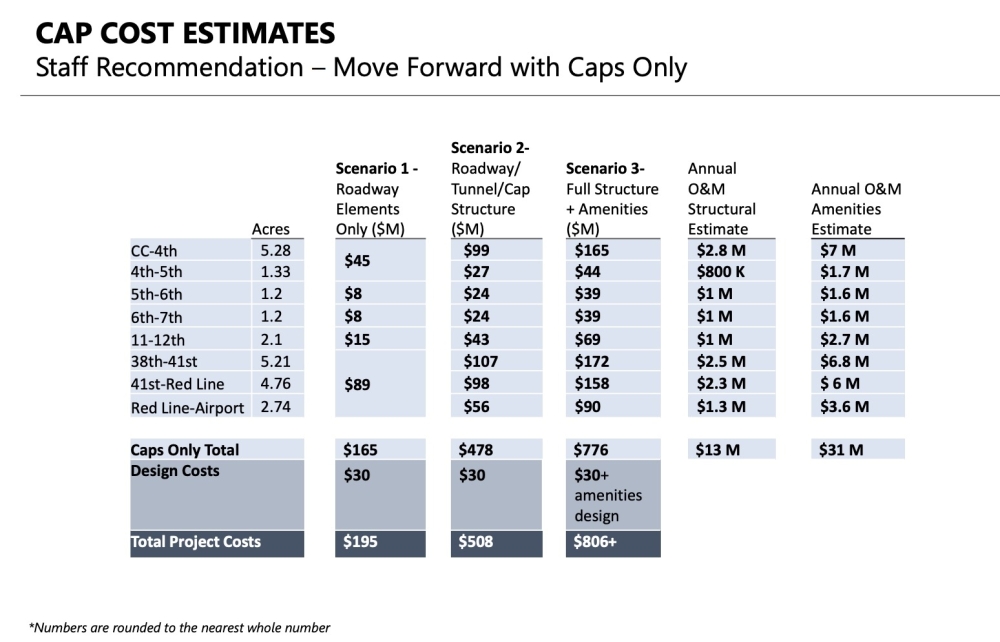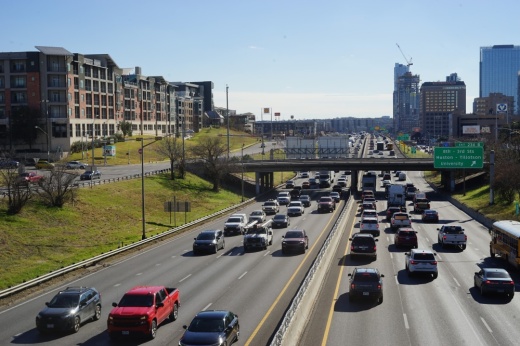The big picture
The concept of building multiple caps and stitches—highway decks of varying sizes that could contain bike and pedestrian pathways, green space, small buildings, cultural space and other public amenities—has been a part of Austin officials' planning related to the I-35 expansion for years. However, the final scope of the locally funded enhancements has yet to be finalized months before the TxDOT project, Capital Express Central, officially breaks ground.

In recent months, City Council members have taken up the topic with the intent of finalizing Austin's cap and stitch plan to meet TxDOT's upcoming deadlines for the program set to roll out over the years ahead.
The state highway department is collaborating with the city on some elements of the cap-and-stitch initiative and will be providing baseline improvements at several crossings over I-35. However, Austin has to decide where its larger decks will go and where the hundreds of millions of dollars needed to build and enhance them will come from.
The breakdown
A Nov. 7 council review of the city's latest cap and stitch plan featured some of the most in-depth information on the scope of the program to date.
The city's outline now features up to 12 caps and stitches spanning I-35 between Lady Bird Lake and 51st Street. The lone connector proposed south of the lake, over Woodland Avenue, was removed from consideration following council discussion last month. Smaller stitches in Central and North Central Austin may also be cut to prioritize larger decks.
Additionally, a cap previously proposed around Eighth Street has now been swapped out and replaced with a new deck around 11th and 12th streets, a move city transportation staff said was made in consultation with downtown stakeholders.
The city's outline doesn't include extensive capping proposed around The University of Texas's campus between 15th and Dean Keeton streets; city staff said they had no recent update on those separate university-backed projects.
The cost
Staff on Nov. 7 also provided an updated breakdown of how much all of Austin's caps and stitches could cost, including infrastructure and development as well as potential amenities to be placed on the decks. Accounting for all 12 caps and stitches, staff now project that:
- Infrastructure design work will total $34 million, plus additional costs for amenity planning
- Roadways and infrastructure will cost about $509 million to build
- Various community amenities atop the structures will cost about $338 million to build
- After construction, maintenance could cost upwards of $48 million per year going forward
- Infrastructure design would cost $30 million
- Infrastructure would cost about $478 million
- Amenities would cost $298 million
- Annual maintenance would total about $44 million

Council members provisionally agreed to move ahead with the reduced cap-only outline, while still including one stitch over Holly Street. Council Member Ryan Alter said the surrounding community would benefit from that enhanced connection over I-35 given its location close to the lake and downtown.
Austin has several ways to pay for the proposed highway decks including local bonds and transportation funding, federal grants, and philanthropy or public-private partnerships. An overall funding structure has yet to be decided.
One option that Mayor Kirk Watson highlighted as among the city's most promising would be federal Transportation Infrastructure Finance and Innovation Act, or TIFIA, loans.
Given how the city's cap-and-stitch plan has come together alongside TxDOT's overall Capital Express Central project, he said securing funds through TIFIA could allow Austin officials to "cover all of what we want to do" with an extended repayment timeline over several decades.
“It feels a lot like the cheapest money, and with plenty of time to handle that," Watson said.
What's next
Officials and city staff members will continue to break down the initiative leading up to TxDOT's initial deadlines.
Austin must commit about $15 million needed for early designs in December to formally advance the city's anticipated caps and stitches. City financial staff said a plan to shift funds around to meet that goal will be presented in the next few weeks.
An estimated $19 million will then be needed by December 2024 to complete that design work before development can proceed. The city must also have its hundreds of millions in overall cap and stitch funding lined up by that time.
For now, the city is awaiting the outcome of its request for $105 million in federal funding to build the largest of its anticipated highway decks, a 5.26-acre plaza between East Cesar Chavez and Fourth streets. A decision on whether those dollars will flow to Austin is expected in February.
Officials and staff said they'll once again dive into the details of Austin's cap and stitch plan and its funding possibilities early next year, once the city has or hasn't received that downtown cap grant and pulled together more information on other deck funding options.
"Not only would we know about the grant on the Cesar Chavez to 4th [cap] but we would likely know ... about a potential TIFIA loan that would then allow us, if we didn’t want to do a TIFIA loan for everything, we could start prioritizing. But at least we would be prioritizing in that context," Watson said.





